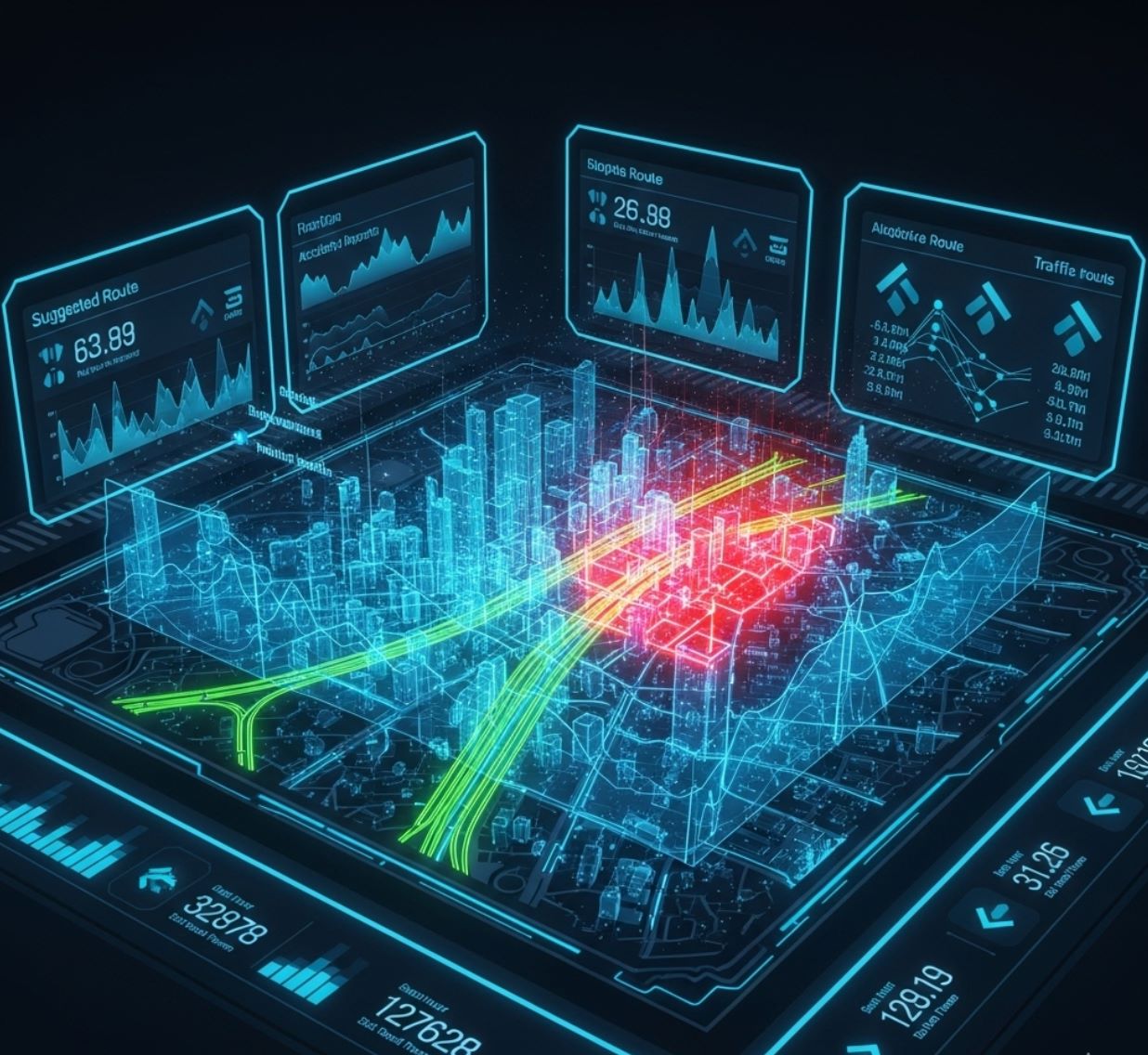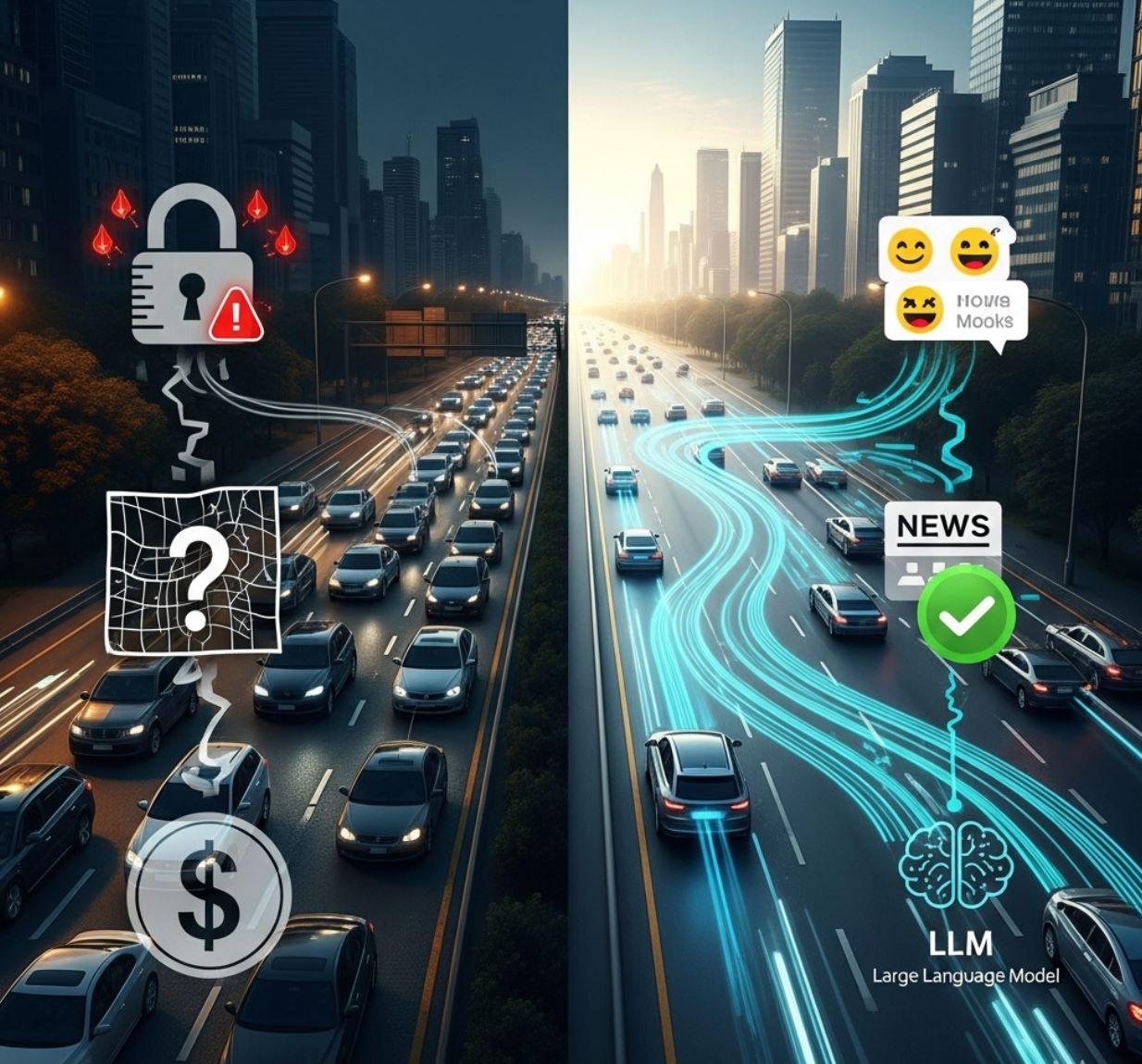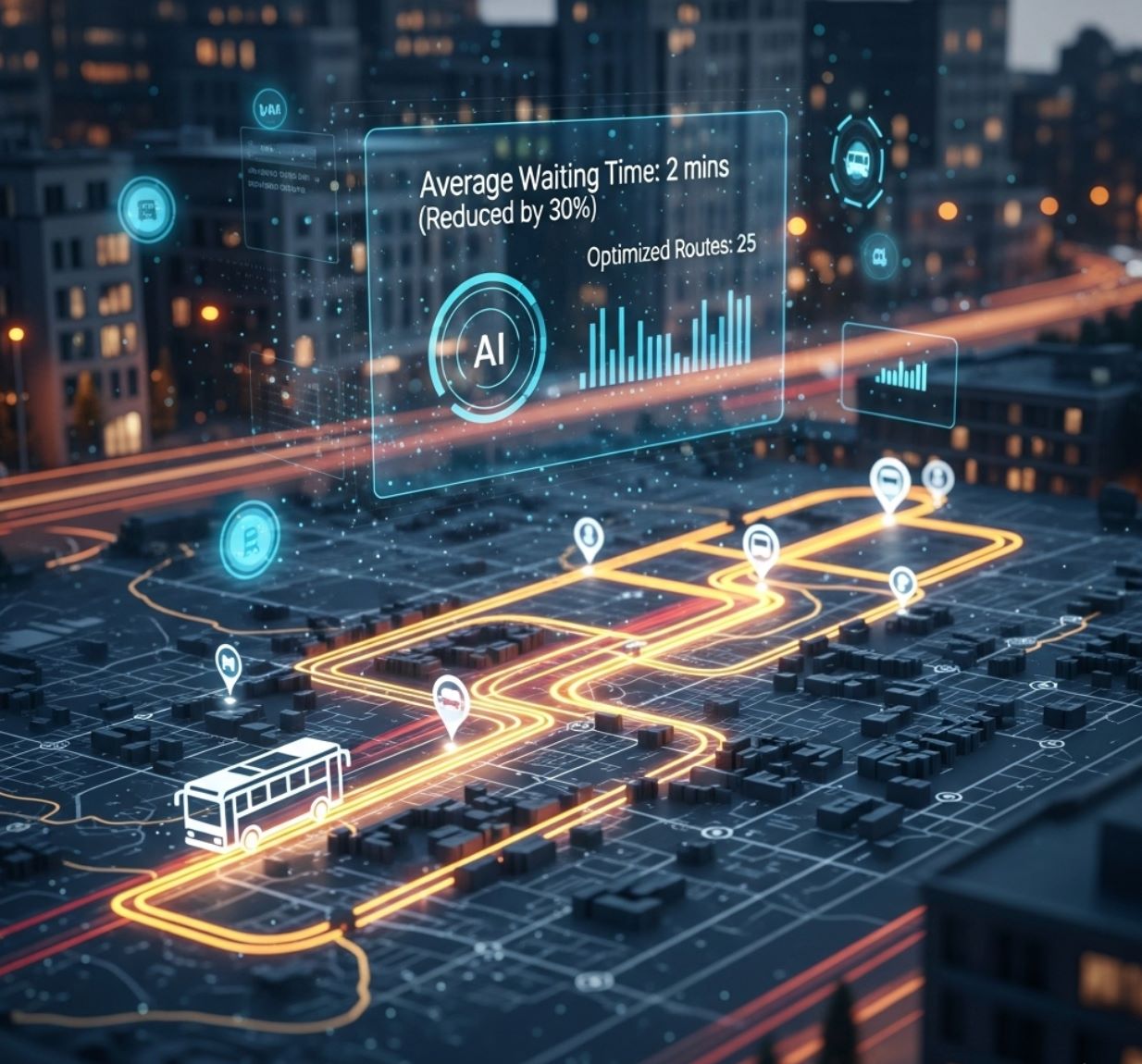AI Predicts Rush-Hour Traffic
Rush-hour traffic jams not only waste valuable time but also burn extra fuel, increase pollution, and harm public health. Studies estimate that congestion costs many economies up to 2% of GDP each year. To address this, artificial intelligence (AI) is increasingly being applied to predict traffic flow. By analyzing big data from sensors, GPS, cameras, and external factors such as weather and events, AI can forecast bottlenecks before they happen and suggest optimized routes. From Google Maps and Waze to smart city traffic systems, AI is helping make rush-hour commutes shorter, cleaner, and less stressful.
The Traffic Congestion Crisis
In busy cities, highways and streets often become parking lots during rush hour – a frustrating and costly problem. Studies estimate that traffic congestion costs many economies around 2% of GDP. In the U.S., for example, the average driver loses roughly 43 hours per year stuck in traffic.
Time Lost
Economic Impact
Environmental Cost
This wasted time also means billions of dollars in lost productivity, extra fuel burned, and more pollution and stress on people's health.
To tackle this, transportation planners are turning to artificial intelligence. By forecasting where and when jams will occur, AI systems aim to smooth traffic flow before a slowdown even begins.
How AI Processes Traffic Data
Modern AI traffic forecasts rely on big data. They collect vast streams of information about roads: counts and speeds from sensors and cameras, GPS traces from smartphones and vehicles, and even external factors like weather or special events.
For example, traffic cameras and GPS devices feed live data that AI analyzes alongside historical patterns of the same roads.
Given what's happening now and what usually happens at this time, how will traffic look in the near future?
— Core AI Traffic Prediction Logic
This lets the model "know" that a highway segment usually slows down on weekday mornings, or that a concert downtown will send extra cars onto certain streets. In practice, systems like Google Maps combine real-time traffic readings with years of past trends to predict the conditions 10–50 minutes ahead.
Key Data Sources for AI Traffic Models
- Historical traffic data: Speeds and volumes on each road by time of day/week
- Live feeds: Real-time vehicle counts and speeds from road sensors, traffic cameras, and GPS-equipped devices
- External info: Weather reports, accident or construction alerts, and special event schedules
- Machine learning algorithms: Models (like neural networks) that learn complex patterns from all the above inputs
Advanced AI Techniques in Traffic Prediction
AI models process these inputs with advanced techniques. Traditional statistical methods struggle with the sheer scale and variability of urban traffic, so researchers now use deep learning.
Recurrent Neural Networks (RNNs)
Capture traffic changes over time sequences
- Time-series analysis
- Pattern recognition
Graph Neural Networks (GNNs)
Use road network structure explicitly
- Network topology
- Spatial relationships
Convolutional Networks
Process visual traffic data from cameras
- Image processing
- Real-time analysis
For example, recurrent neural networks (RNNs) or convolutional nets can capture traffic changes over time, and graph neural networks (GNNs) explicitly use the road network's structure.

Real-World Applications
AI-powered traffic prediction is already in use by tech companies and cities worldwide. For instance, Google Maps integrates live user data and AI models to forecast congestion.
It "remembers" that a certain freeway usually slows from 6–7 AM, then combines that history with live speeds to predict future conditions.
DeepMind (Google's AI lab) reports that enhanced ML models (using GNNs) have boosted ETA accuracy by up to 50% in cities like Taichung and Sydney. After this upgrade, over 97% of trip ETAs were highly accurate.
Commercial and Municipal Implementations
Commercial Traffic Platforms
- INRIX: AI predicts real-time traffic speeds on all roads by crunching decades of data, covering even smaller streets that traditional sensors miss
- Waze (Google): Uses crowdsourced GPS and AI to alert drivers about upcoming slowdowns, suggesting alternate routes before jams form
- Apple Maps: Leverages AI to process user data and provide real-time traffic predictions and routing optimization
Municipal AI Traffic Systems
- Bellevue, Washington: Cameras at 40 intersections feed live video into AI that spots congestion hotspots in real time
- Denmark: City systems use AI to process traffic volumes and automatically tweak signal timings based on current flow
- Pittsburgh & Los Angeles: AI-adaptive signals that adjust on the fly, cutting idle time and keeping cars moving
Advanced Research Initiatives
- TRALICO Project: Europe–Japan collaboration testing deep-learning system that both forecasts congestion and controls lights in Istanbul
- Large Language Models: Cutting-edge research using ChatGPT-like models to "understand" written info about road closures and factor that into forecasts
- Social Media Integration: Future AI systems integrating traffic reports from social media and live news feeds
All of these real-world deployments aim to predict congestion in advance so planners can act before traffic snarls appear.

Benefits for Drivers and Cities
The payoff of accurate traffic forecasts is huge. For individual commuters, AI means more reliable travel times and less wasted sitting in traffic.
Apps can warn you before you leave if a road will soon jam up, or reroute you to avoid slowdowns.
Traditional Traffic Management
- Reactive responses to congestion
- Fixed signal timing
- Limited real-time data
- Hours lost in traffic weekly
AI-Powered Prediction
- Proactive congestion prevention
- Dynamic signal optimization
- Comprehensive data integration
- Hours saved through smart routing
Measurable Impact Results
Studies suggest this could save drivers hours each week. AI guidance also reduces fuel use – no more idling at lights or creeping along stop-and-go highways means less gas burned.
In fact, one Google AI project reports cutting vehicle stops by 30% and fuel emissions by 10% at busy intersections.
Individual Benefits
Direct advantages for commuters
- More reliable travel times
- Reduced fuel consumption
- Lower commuting stress
- Hours saved weekly
City-Wide Benefits
Broader urban improvements
- Lower pollution levels
- Economic productivity gains
- Cleaner air quality
- More efficient road networks
At the city level, smoother traffic flow translates to lower pollution and economic gains. Less time in traffic means higher productivity, lower commuting stress, and cleaner air.
In short, AI-powered predictions help people make better routing decisions and help cities design more efficient road networks.

Challenges and Future Outlook
Building AI traffic forecasts isn't without hurdles. Getting and processing so much data can be expensive – cities may need to invest in sensors, cameras and computing infrastructure.
Integrating AI into legacy traffic systems is complex, and the staff must be trained to use the new tools.
Key Implementation Challenges
Infrastructure Investment Costs
Cities require significant investment in sensors, cameras, and computing infrastructure. The initial setup costs can be substantial, requiring careful budget planning and phased implementation strategies.
Data Privacy and Security
Massive location datasets must be handled securely, with robust safeguards needed to protect against cybersecurity threats. Connected traffic systems could be targets for hacking, requiring comprehensive security protocols.
Model Bias and Data Gaps
Models can go wrong if their training data has blind spots. For example, little data on rural roads is a known gap that can lead to inaccurate predictions in less monitored areas.
Legacy System Integration
Integrating AI into existing traffic management systems is complex, requiring extensive staff training and careful coordination between old and new technologies.
Future Innovations and Opportunities
Despite these challenges, experts are optimistic. AI in traffic management is still in its infancy, with much room to grow. Researchers see clear paths forward – such as making models that adapt in real time to sudden events (like a sports game letting out) and scaling solutions to rural areas.
Language Models
Using large language models to understand written traffic reports
Social Integration
Incorporating social media and news feeds for context
Real-time Adaptation
Models that instantly adapt to sudden events and changes
A cutting-edge idea is to use large language models (like those behind ChatGPT) to add context to predictions. For example, a new method lets an AI "understand" written info about road closures or events and factor that into its forecast.
In the near future, AI systems might integrate traffic reports from social media or live news feeds, making predictions even smarter.

Conclusion: The Road Ahead
In summary, artificial intelligence is transforming how we deal with rush-hour traffic. By learning from vast historical trends and live road conditions, AI systems can look around the corner and estimate where congestion will happen.
This gives drivers and cities a valuable head start: adjusting signals, rerouting vehicles, or shifting schedules before backups form.




